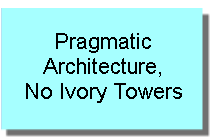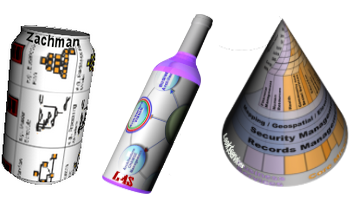Understanding your enterprise capability to deal with the dynamic nature of your audiences and their needs will help your organization to break from the pack and do better in the marketplace.
Our value based stakeholder management approach and Subject Matter Expert(SME) Architects helps you cultivate a symbiotic relationship with stakeholder groups and understand their priorities better and accelerating the solution development with their Industry expertise.
Our Architecture Value Proposition
- We help you, Leverage legacy technology investments
- Incorporate best practices and proven experiences
- Eliminate unnecessary risk and unexpected cost
- Appraise cost-benefits across evolving solutions
- Align with key business drivers
L4S Agile Architecture Modeling Approach
Architecture Practitioner's at Look4Services follow a set of core solution design and modeling practices that enable an Agile way of thinking supported by design accelerators, frameworks and ready to use templates to help communicate better with various stakeholders within your business.
Our Agile Architecture approach and methodology involves :






Industry Architecture Framework Approach
Architects at Look4Services are certified and applies several years of experience in pragmatic applications of industry standard Enterprise and Solution architecture frameworks, delivering it specific to your organisations needs.
What are the EA frameworks and Why do we need them ?
An enterprise architecture (EA) framework defines how to organize the system structure, views and objects associated with your organisations enterprise architecture. An architecture framework serves as guiding principles to establish a common practice for creating, interpreting, analysing and using architecture within a particular domain and/or layers
Our recommended light weight EA framework
- will help formalise the medium of communication and maximise reuse of its work-products.
- The EA framework embodies, in a structured manner, the long experience of the many of us in the industry and our companies.
- It makes the EA development predictable and repeatable and ensures that professionals are certified against a single standard.

Software Architecture (SA) involves designing or modeling something before building or engineering the solution. SA is the process of taking operational and technical requirements, and designing a solution that optimizes things important to the system like quality, performance, security, and maintainability.
In the entire Software development process, the architecture form its core foundations that if well thought through, can reduce the cost of the solution enabling component re-use and result in a solution that is Robust and Scalable.

When a solution demands distribution of components or Services that is either run/processed on the server side and accessed/visualised on the client side, it is termed as a Two-Tier Architecture.
It is typically an approach adopted for small or monolithic applications and has a few disadvantages over other evolved multi-layered Architecture.

When the solution composes several discreet services or behaviour that can be grouped as logical layers of organisation of software code, then it is categories as multi-tier Architecture. The components provides a separation of concerns and decouples components from each layers.
Think of separating your code in layers like UI layer, business layer and data-access layer. A tier on the other end, represents the physical deployment of these layers. In other words, a tier might be a two-tier, three-tier or n-tier architecture, where different pieces of software are deployed at different places

This is the most prominent and critical architecture patten and aligns close to the real-world system organisation. A software build on Object-Oriented(OO) principles makes it highly scalable, reusable, extendable and maintainable and reduces development time and costs.
The entire application is divided into separate responsibilities and the system is known as a collection of objects promoting concepts like encapsulation, Inheritance Composition, Polymorphism etc.

This style of architecture is closer to the business as it represents an approach of design based on the specific sphere of activity of knowledge in the subject matter (referred as Domain) and is more requirement oriented.
The Domain driven approach organises components and elements into groups of different entities that relates to the subject area of the business problem within your enterprise architecture. It introduces concepts like entities, value objects, domain modeling, ubiquitous language, bounded context and anti-corruption layer.

This architecture practice is mostly a complementary style which enhances the existing design architecture rather than replace it. It helps your software application more maintainable as well as reusable. AOSD helps you separate components that have cross cutting functionality such as - logging, persistence, Security. data transfer into reusable shared services/components thereby reducing cost of future maintenance and change.

This approach to architecture has gained popularity in organisations that tends to have solutions requiring to integrate services across systems and solutions of different technology.
SOA is a style of architecture composing of a collection of services that communicate with each other and is developed in a modular nature with a clear boundary of responsibility and data exchange. Developed as loosely coupled and exposed via interfaces that can be configured and consumed by other software components enabling easy time-to-market advantages, as well as business agility.

A natural evolution of SOA, with the aim of granular services, A microservice architecture is a collection of small, self-contained, autonomous services that encapsulate a single business capability. Unlike SOA, the coarse level applications and services are broken down into services that are very small, independent and separate code-bases, which are self-deployable.
Each service may have its own database in order to be decoupled from other services. All these features allow developers to focus on a single service rather than looking at the entire application. Microservices have seen widespread adoption and it seems very promising.

This is prominent in the scope of big data solutions as to ensure the separation of component responsibility based on the type of data ingestion and processing requirements. This is used for technology platforms such as - Spark & Hadoop, Cassandra etc.
In the Big Data solutions, the ingestion of data from various sources that may provide data in batches whereas some provide real-time data as streams. In such scenarios Lambda architecture stands out and helps ingesting both batch and stream data. Contact us to assess your data ingestion architecture needs.

An Event driven architecture is optimised to perform in an problem scope of dealing with the events produced and consumed between different software components. This architecture usually contains at least three decoupled players (the producer, pipeline and the consumer). The producer is the one who emits an event. It is completely unaware about what happens to the event after it is emitted.
It does not care how the event is going to be processed or consumed by any other software component. It is also referred to as message-driven architecture or stream-processing architecture.



